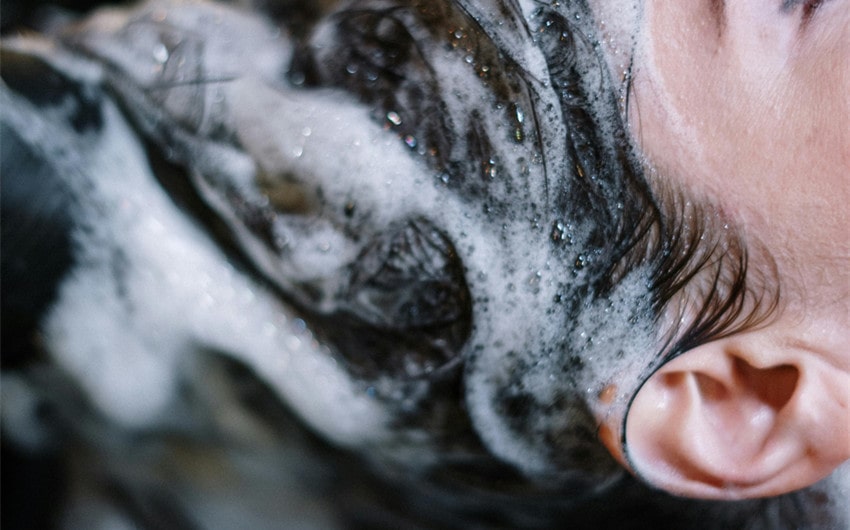What Ingredients to Avoid in Shampoo: 14 Harmful Chemicals
Choosing the right shampoo is crucial for maintaining healthy hair, but with so many options, it’s easy to overlook harmful ingredients. Knowing what ingredients to avoid in shampoo can protect your hair from unnecessary damage and irritation. Many shampoos contain chemicals that strip natural oils, irritate the scalp, and cause long-term issues.
In this article, we’ll explore some common harmful ingredients found in shampoos and explain why avoiding them is key to keeping your hair looking and feeling its best. Let’s dive into what you should keep an eye out for on those labels!
Common Ingredients to Avoid in Shampoo

Many shampoos contain chemicals that may seem harmless at first glance, but over time, they can cause significant damage to your hair and scalp. Some ingredients can strip your hair of its natural oils, cause scalp irritation, and even pose long-term health risks. Here are some of the most common ingredients to avoid in shampoo and why you should steer clear of them.
1. Sulfates (Sodium Lauryl Sulfate and Sodium Laureth Sulfate)
Sulfates, particularly Sodium Lauryl Sulfate (SLS) and Sodium Laureth Sulfate (SLES), are common detergents and foaming agents used in many shampoos. They are responsible for the lathering effect that makes you feel like your hair is getting clean. However, sulfates can be harsh on your hair and scalp.
- Why to Avoid: Sulfates strip away the natural oils that keep your hair moisturized and healthy. This can leave your hair feeling dry, brittle, and prone to breakage. Sulfates can also cause scalp irritation, especially in people with sensitive skin or conditions like eczema. Frequent use of sulfate-containing shampoos may lead to long-term hair damage, such as frizz and split ends.
2. Parabens
Parabens are synthetic preservatives used to extend the shelf life of beauty products, including shampoos. They prevent the growth of mold and bacteria, but they come with significant health concerns.
- Why to Avoid: Parabens have been linked to hormone disruption, as they can mimic estrogen in the body. This can potentially lead to an increased risk of breast cancer and reproductive issues. While the research is ongoing, many consumers prefer to avoid parabens altogether as a precaution. Common parabens to look out for include methylparaben, propylparaben, and butylparaben.
3. Silicones
Silicones, such as dimethicone and cyclomethicone, are often added to shampoos to create a smooth, shiny appearance and make your hair feel soft. While they can offer temporary benefits, the long-term effects are not as positive.
- Why to Avoid: Silicones coat your hair with a thin, waterproof layer that can lead to product buildup over time. This buildup can weigh your hair down, make it appear greasy or dull, and block moisture from penetrating the hair shaft. Over time, your hair may become dry, brittle, and more prone to breakage. Silicones also make it harder to properly clean your hair, as they can trap dirt and other harmful chemicals.
4. Formaldehyde-Releasing Agents
Formaldehyde-releasing agents, such as DMDM Hydantoin, Quaternium-15, and Diazolidinyl Urea, are used in shampoos as preservatives to prevent bacterial growth. Although these chemicals release small amounts of formaldehyde over time, the health risks they pose make them worth avoiding.
- Why to Avoid: Formaldehyde is a known carcinogen, meaning it has the potential to cause cancer with prolonged exposure. In addition to its cancer risk, formaldehyde can cause skin irritation, allergic reactions, and damage to the hair follicles, leading to hair thinning and loss. The release of formaldehyde in personal care products is particularly concerning for those with sensitive skin or scalp conditions.
5. Synthetic Fragrances
Fragrance is often added to shampoos to create a pleasant scent, but the term “fragrance” can hide a host of undisclosed chemicals. Synthetic fragrances can contain allergens and irritants that may affect both your scalp and overall health.
- Why to Avoid: The chemicals used in synthetic fragrances can cause scalp irritation, dryness, and allergic reactions. Additionally, many synthetic fragrances contain phthalates, which are known endocrine disruptors. These chemicals can interfere with hormone function and have been linked to various health problems, including reproductive issues. Opting for fragrance-free shampoos or those made with natural essential oils is a safer alternative.
6. Phthalates
Phthalates are chemicals commonly used in personal care products, including shampoos, to help fragrances last longer. However, their impact on human health has raised concerns over time.
- Why to Avoid: Phthalates have been identified as endocrine disruptors, meaning they can interfere with hormone production and regulation in the body. Long-term exposure to phthalates has been linked to reproductive issues, developmental problems, and even cancer. Since phthalates are often hidden under the term “fragrance” on ingredient labels, it’s challenging to identify them, making it safer to avoid shampoos with synthetic fragrances altogether.
Less Common but Harmful Ingredients

While some ingredients in shampoos are widely recognized for their harmful effects, there are other lesser-known chemicals that can also pose risks to your hair, scalp, and overall health. These ingredients may not be as common as sulfates or parabens, but they are still worth avoiding if you’re aiming for healthier, safer hair care. Here’s a closer look at some of these less common but harmful ingredients.
1. Polyethylene Glycol (PEGs)
Polyethylene Glycol, often referred to as PEGs, is a group of compounds used in personal care products, including shampoos, as thickeners, softeners, and solvents. They help create a creamy texture, allowing the shampoo to glide smoothly over the hair.
- Why to Avoid: PEGs can be harsh on the skin and scalp, especially for individuals with sensitive skin. They strip the natural oils from your hair, leaving it dry, brittle, and prone to damage. Additionally, PEGs are often contaminated with ethylene oxide and 1,4-dioxane—chemicals that are known carcinogens. These contaminants are produced during the manufacturing process and can potentially pose long-term health risks when absorbed through the skin.
2. Triclosan
Triclosan is an antibacterial and antifungal agent that is sometimes used in shampoos and other personal care products. It’s intended to kill bacteria and extend the shelf life of products.
- Why to Avoid: Triclosan has been linked to hormone disruption, particularly affecting thyroid function and reproductive hormones. It may also contribute to antibiotic resistance, meaning that overuse of antibacterial products like those containing triclosan can make bacteria harder to treat with antibiotics in the future. The FDA has banned triclosan from certain products, but it still may be present in some shampoos and personal care products.
3. Isopropyl Alcohol
Isopropyl alcohol, also known as rubbing alcohol, is often added to shampoos as a drying agent to evaporate moisture quickly and create a lightweight feel in the product. However, it can have detrimental effects on the hair.
- Why to Avoid: Isopropyl alcohol is extremely drying and strips the hair of its natural moisture. Prolonged use can lead to dry, brittle hair that is prone to breakage and split ends. Additionally, it can irritate the scalp, leading to flakiness and discomfort. While some forms of alcohol, like fatty alcohols (cetyl alcohol), can be beneficial for hair, isopropyl alcohol is one to avoid.
4. DEA/MEA/TEA (Diethanolamine, Monoethanolamine, and Triethanolamine)
DEA, MEA, and TEA are foaming agents and emulsifiers used in shampoos to create lather and improve the product’s consistency. They are often found in combination with other chemicals to help stabilize the formula.
- Why to Avoid: These chemicals can cause irritation to the skin and scalp, particularly for people with sensitive skin. More concerning is that DEA and its compounds can form nitrosamines when combined with other ingredients, which are known carcinogens. Nitrosamines can be absorbed through the skin and have been linked to organ toxicity and cancer. Prolonged exposure to products containing DEA, MEA, or TEA increases the risk of adverse health effects.
5. Sodium Chloride
Sodium chloride, or common table salt, is sometimes added to shampoos as a thickening agent. While salt is generally harmless in food, its use in hair products can have negative effects on the hair and scalp.
- Why to Avoid: In shampoos, sodium chloride can cause dryness by absorbing moisture from both the scalp and the hair. This can lead to irritation, flakiness, and increased hair damage, especially for individuals with sensitive scalps or conditions like eczema. For those with keratin-treated or color-treated hair, sodium chloride can strip away treatments, reducing their effectiveness and longevity.
6. Cocamide DEA
Cocamide DEA is a chemically modified form of coconut oil that is used as a foaming agent and thickener in shampoos. While it’s derived from coconut oil, its chemical processing makes it a potential health hazard.
- Why to Avoid: Cocamide DEA has been classified as a possible carcinogen by health authorities. Like other DEA compounds, it has the potential to form nitrosamines, which can be absorbed into the skin and increase the risk of cancer. It can also cause skin irritation and allergic reactions in some individuals.
7. Synthetic Colors (FD&C or D&C Dyes)
Synthetic colors are often added to shampoos to make them visually appealing. These colors are usually derived from petroleum or coal tar sources and are labeled as FD&C or D&C followed by a color and number (e.g., FD&C Red No. 40).
- Why to Avoid: Synthetic dyes can be irritating to the skin and scalp and may cause allergic reactions. More concerning is that some synthetic colors, particularly those derived from coal tar, have been linked to cancer in animal studies. While these dyes are approved for use in cosmetics, many people choose to avoid them due to potential health risks.
8. Propylene Glycol
Propylene glycol is a common ingredient in many personal care products, including shampoos, because of its ability to help retain moisture. It’s also used as a solvent to help dissolve other ingredients in the formula.
- Why to Avoid: While it is generally recognized as safe in small amounts, propylene glycol can cause skin irritation, especially in sensitive individuals. In higher concentrations, it can disrupt the skin’s natural moisture barrier, leading to dryness and increased sensitivity. Additionally, prolonged exposure to products containing propylene glycol may increase the risk of allergic reactions.


